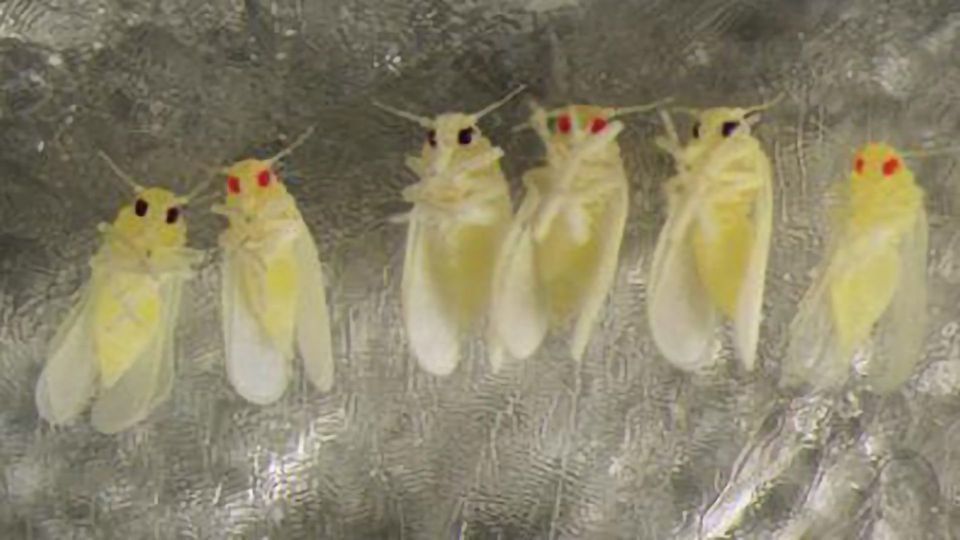Gene-editing Protocol for Whitefly Opens the Door for Pest Control

Complete the form below to unlock access to ALL audio articles.
The ability to genetically modify organisms via means such as the CRISPR/Cas9 gene-editing technology is changing our approach to pest control. Scientists recently genetically engineered a self-limiting diamondback moth, for example, where males of the strain are introduced into the environment, find a female pest to mate with and produce self-limiting gene is passed on to the offspring. There are many ethical considerations of course, but it seems that the potential of genetic engineering and editing in this field is certainly becoming realized.
Whiteflies are one of the most important agricultural pests in the world. They land on plants and suck the plant juice, producing a sticky substance called honeydew. This honeydew if left on its own can cause fungal diseases to form on the leaves of the plant. The plant can become weak and may be unable to carry out photosynthesis; leaves turn pale or yellow and growth is halted. Whiteflies have a varied diet and feed on many different types of crop plants.
Despite being such a large issue, successful genetic manipulation and control of the insect has remained problematic based on their incredibly small size.
However, a new study published in The CRISPR Journal outlines one team's efforts in developing a novel CRISPR/Cas9 gene-editing protocol that could help here.
"We found a way to genetically modify these insects, and our technique paves the way not only for basic biological studies of this insect, but also for the development of potential genetic control strategies," Jason Rasgon, Professor of Entomology and Disease Epidemiology at Penn State, said.
"Gene editing by CRISPR/Cas9 is usually performed by injecting the gene-editing complex into insect embryos, but the exceedingly small size of whitefly embryos and the high mortality of injected eggs makes this technically challenging," Rasgon adds. "ReMOT Control (Receptor-Mediated Ovary Transduction of Cargo), a specific type of CRISPR/Cas9 technique developed in my lab, circumvents the need to inject embryos. Instead, you inject the gene-editing complex which is fused to a small ovary-targeting molecule called BtKV, into adult females and the BtKV guides the complex into the ovaries."
The team explored the functionality of ReMOT Control in whiteflies by targeting the "white " gene, a gene implicated in eye color. Under normal circumstances, the flies have brown eyes, but when the "white gene" is non-functional as a result of genetic mutations, the insect presents with white eyes. It's a visual aid to determine gene expression.
The scientists discovered that ReMOT Control produced genetic mutations that resulted in juvenile whiteflies having white eyes that turned red as they grew into adults.
"Tangentially, we learned a bit about eye color development," said Rasgon. "We expected the eyes to remain white and were surprised when they turned red. Importantly, however, we found that the mutations we generated using ReMOT Control were passed on to offspring, which means that a change can be made that is inherited to future generations."
The study demonstrates the ability of ReMOT Control in targeting and editing genes within whiteflies, and so, it's plausible that the strategy could be adapted to target genes implicated in transmitting viral pathogens.
"This technique can be used for any application where you want to delete any gene in whiteflies, for basic biology studies or for the development of potential genetic control strategies," Rasgon concludes.
Reference: Heu, McCullough, Luan and Rasgon. (2020). CRISPR-Cas9-Based Genome Editing in the Silverleaf Whitefly (Bemisia tabaci). The CRISPR Journal. DOI: https://doi.org/10.1089/crispr.2019.0067.




